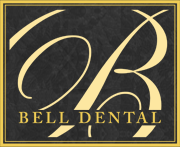The Stages of Gum Disease
 Gum disease (periodontal disease) is a persistent infection of the gums and bone that support the teeth. The condition starts out as a minor infection called gingivitis, before progressing to the more serious condition, periodontitis.
Gum disease (periodontal disease) is a persistent infection of the gums and bone that support the teeth. The condition starts out as a minor infection called gingivitis, before progressing to the more serious condition, periodontitis.
At Bell Dental in Lake Jackson, TX, our team offers various restorative dentistry treatments to improve oral health and successfully treat the stages of gum disease.
Gum Disease Risk Factors
Since gum disease has serious consequences, including tooth loss, it is important to be aware of changes in your mouth. Maintaining a proper oral care routine will reduce your risk of developing the condition.
Tobacco users are twice as likely to develop gum disease.
In addition, the hormonal changes in pregnant women increase the risk of periodontitis.
Stage One: Gingivitis
Gingivitis develops when plaque forms on the teeth and infects your gum tissue. Over time, the bacteria in plaque damage your teeth and gums.
Some indications of gingivitis include:
- Occasional bad breath
- Sensitive gums
- Red, swollen, and tender gums
- Bleeding when flossing
- Gums have pulled away from the teeth at depths of 2 to 4mm
Treatment for gingivitis involves an improved oral hygiene routine, regular dental check-ups, and professional cleanings with your dentist. At this stage gum disease is entirely reversible.
Stage Two: Early to Moderate Periodontal Disease
If dental intervention has not started, the infection will extend deeper and begin to damage the supporting bone. As a result, the teeth can become loose and mobile.
At this stage, symptoms include:
- Increased redness and swelling of gums
- Worsening bad breath
- Bleeding when brushing and flossing
- Receding depths at about four to five millimeters for early periodontitis and six to seven millimeters for moderate gum disease
- Infection begins to enter your bloodstream
- Pain is unlikely despite the deeper infection and bone loss
- Immune system is being stressed by the infection
Eliminating the bacteria through daily oral hygiene alone is not effective because periodontal pockets cannot be reached with a toothbrush or floss.
Treatment for slight to moderate periodontal disease can include scaling and root planning (a deep cleaning). This removes the thick deposits of bacteria, plaque, and calculus from below the gum line.
Stage Three: Advanced Periodontal Disease
The gums are now severely infected and distressed. This is the stage of the disease in which patients experience pain and tooth loss.
The disease can cause your existing teeth to start shifting out of place, having an adverse effect on your bite and jaw. At this point, 50 to 90 percent of the bone can be lost.
Some additional signs of advanced periodontal disease include:
- Red, swollen, irritated, and oozing gums
- Cold sensitivity
- Receding depths of seven millimeters or more
- Pain when chewing
- Severe bad breath
- Foul taste in the mouth
- Tooth loss
- Shifting teeth
- Bacteria is continually entering the bloodstream
- Increased risk of heart disease, cancer, and diabetes
Urgent care is needed at this point to stop the disease and decrease additional health risks.
Schedule Your Dental Cleaning Today
Fortunately, Bell Dental offers treatments for every stage of gum disease. Contact us online or call us at 979-297-1201.



